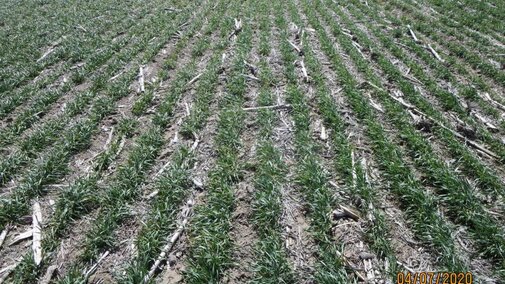Some producers are concerned with the condition of their winter wheat fields this spring. At the time of seeding last fall, some areas were dry and under no-till conditions it was difficult if not impossible to seed at the recommended seeding depth. On the other hand, fields that were tilled to control weeds and prepare a seedbed had loose seedbeds at seeding time which could also lead to problems.
For more information about yellow wheat, read the article “What are the causes of yellow wheat?” from Kansas State University.
Both of these conditions increase the possibility of winter injury. Shallow seed placement leaves the crown or growing point and roots more vulnerable to the weather fluctuations. Much of the winter injury being observed this spring is caused by dry soil and/or a loose seedbed which warms up and cools down six times faster than moist soil.
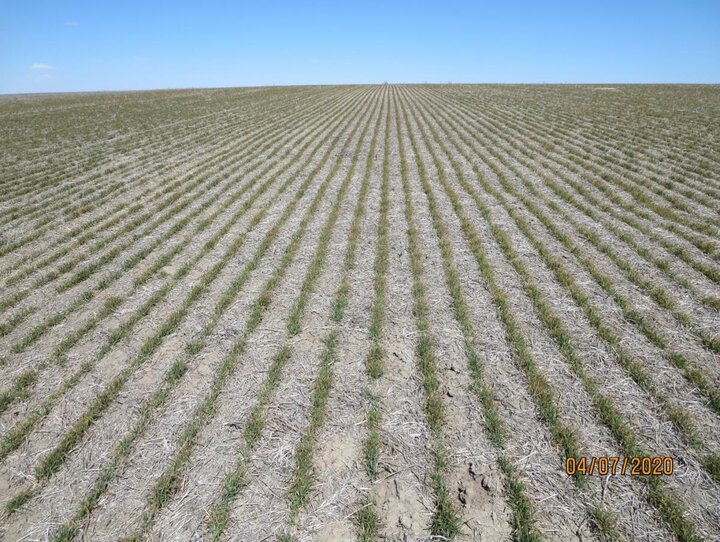
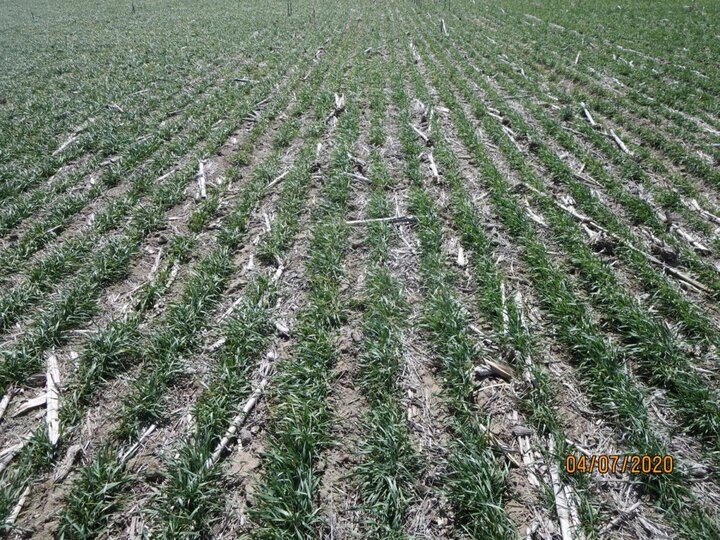
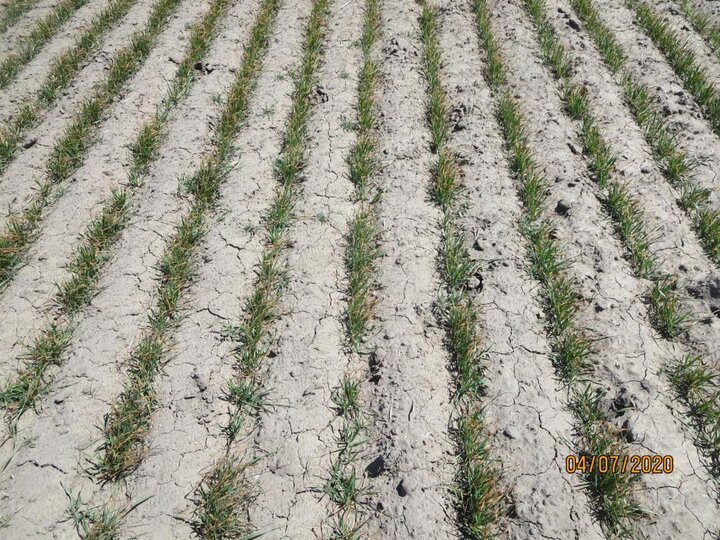
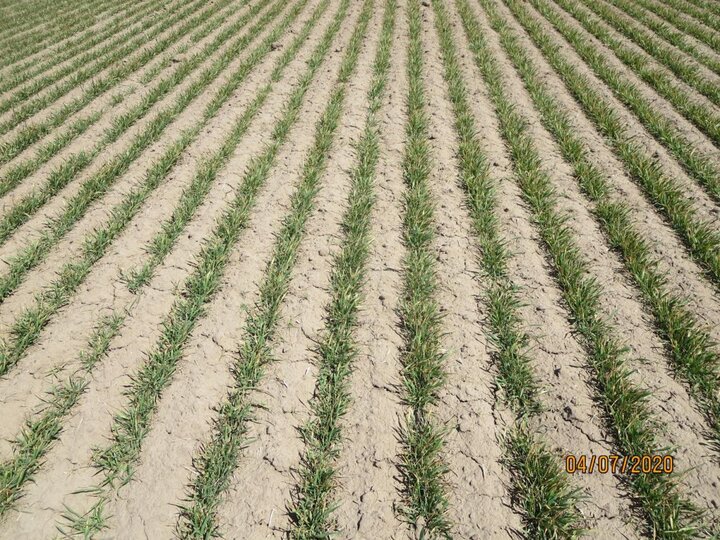
Many of the winter wheat fields would have benefited from an early application of nitrogen fertilizer in late winter or early spring. A strong fertility program can help wheat overcome some of the weather challenges it faces. The recommendation is to apply nitrogen as soon as field conditions permit in late winter or early spring. Fall applications of large amounts of nitrogen fertilizer, especially if the wheat is seeded early, results in excessive fall growth of the winter wheat. These post applications of nitrogen fertilizer, if liquid, are best applied with streamer nozzles.
Smaller amounts of fertilizer can be applied in conjunction with a herbicide application. When applied this way using broadcast nozzles and when applied at the appropriate time for the weeds being controlled, leaf burn on the wheat should be minimal. As always, read and follow herbicide labels as not all herbicides are compatible with fertilizer.
Bare patches in wheat fields and stunted and yellow plants may be indicative of root and crown rot diseases, but may also be due to failed germination due to dry soil conditions at the time of planting. If winter wheat is seeded late, plants fail to develop adequate crown carbohydrate reserves needed for prolonged respiration during the winter. This increases susceptibility to certain diseases that cause blight, yellowing, and bare patches in early spring. Planting too early, on the other hand, favors the activity of certain soilborne diseases that damage the roots and crown before the onset of winter dormancy. Plants damaged in this way are susceptible to winter kill. Yellowing in early spring can also be caused by early season leaf spotting diseases such as tan spot and Septoria tritici blotch, and both yellowing and stunting can be caused by virus diseases such as wheat soilborne mosaic and wheat streak mosaic.
There could be many reasons why a wheat crop does not look like it is doing very well. Some of the fields that producers have concerns about have may have diseases, some have winter injury, others may have a nutrient deficiency or it is possible to have a combination of any of these. Adequate scouting and proper diagnosis is important to determine how to best address the observed symptoms.
For more information about yellow wheat, read the article “What are the causes of yellow wheat?” from Kansas State University.
